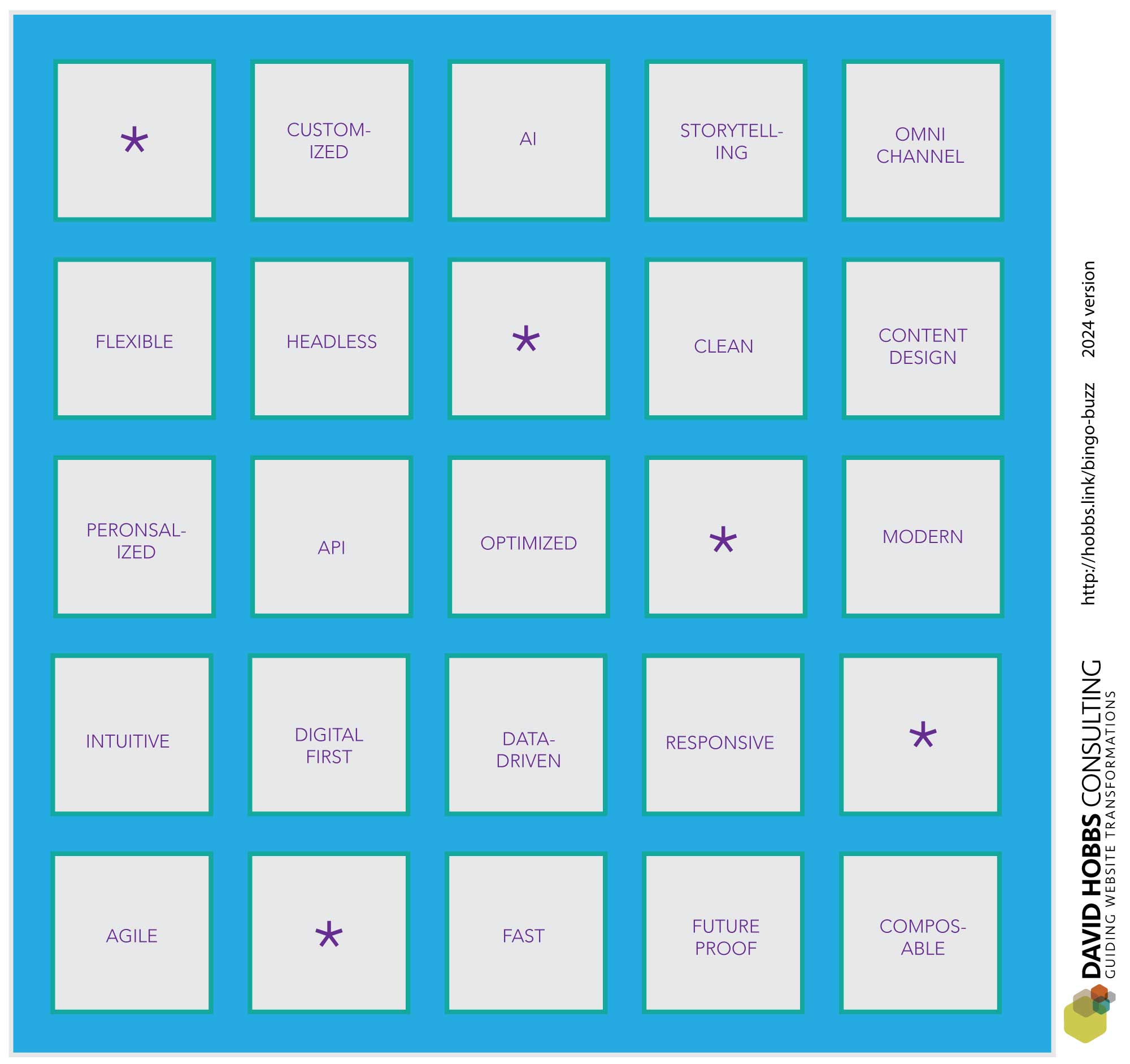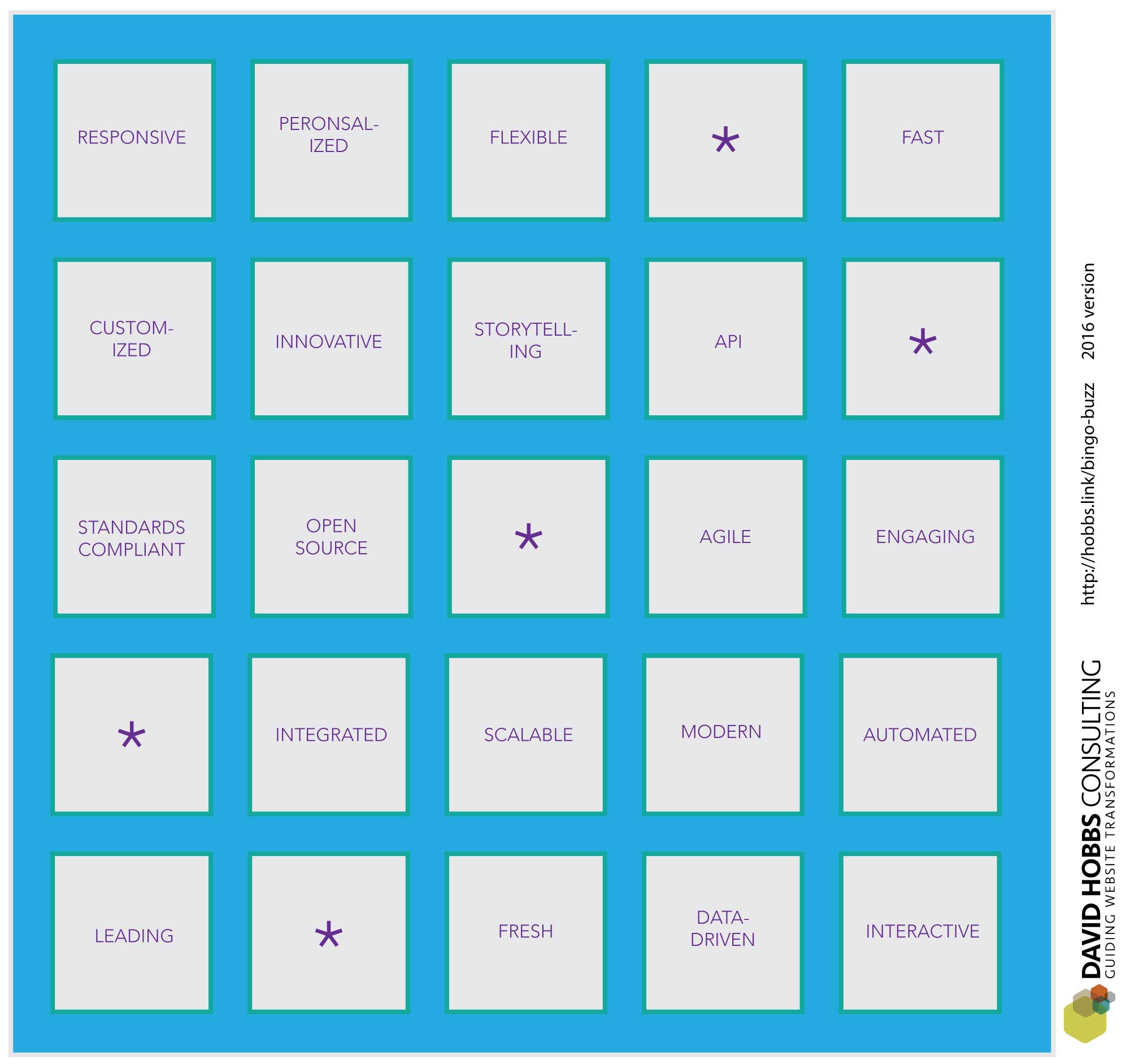Key Points
- Everyone wants innovation but you're not going to get there with buzzwords.
- Buzzwords in digital strategies and RFPs often indicate shallow thinking.
- Make sure you describe / refine what buzzwords mean for your organization's digital presence.
Why buzzwords are a problem
Buzzwords generally encourage shallow thinking. In specific:
They overlook the opportunity to transcend the churn of specific complaints to determine what the real business need is
Many terms you may throw around are simply table stakes in digital now (see "Responsive → Discussion about effective content" below)
They overlook more boring change that may have a much bigger business impact (such as consolidation of digital presences to better cross-sell)
They can have the appearance that everyone agrees while in truth everyone has a different understanding of what will be implemented
They are almost always chasing what other people are doing rather than doing what's uniquely beneficial to your business.

When buzzwords are a problem
Buzzwords are pretty much always a problem (except perhaps when simply brainstorming), but are especially problematic in three cases:
When formulating a digital strategy (which, remember, should be done early!)
When sending out an RFP (or, for that matter, before talking with potential implementation partners — regardless of whether you develop an RFP)
When working to reset a strategy or to refine it as part of ongoing digital change
Moving from buzzwords to real innovation
I'm a firm believer that every organization is unique, and that any strategy should be unique as well. So the suggestions below are merely suggestions, and actually turning buzzwords to innovation is more subtle. Fundamentally, we need to anchor back on the business need, and then look at what innovative approach will achieve the real business need. Put another way, the buzzwords are ideally put aside when attempting to think strategically (and then dusted off as needed to see how the trends apply to the strategic needs). That said, here are some examples of how to turn a buzzword into real innovation.
Flexibility → Streamlined
One of the most common complaints that grows and grows over the years of using a CMS is that it is not flexible enough. But simply saying the new site and underlying CMS needs to be flexible is an invitation for the pendulum to swing in the opposite direction of being too flexible (so eroding consistency across the digital presence for example). Also, there are usually a wide range of reasons that the CMS feels limited from process to training to how the CMS was managed. Just swapping out a new system without addressing the root cause is not helpful. One possible approach (again, the exact situation varies) is that the system actually needs to streamline common activities. For instance, teams often approach a request that happens all the time as a one-off (which may be difficult to address, so the team doesn't) rather than rising above that to streamline those things that should be. In other words, sometimes publishers are forced to do things in a custom way (so the system seems inflexible) simply because it does not effectively handle things that should be streamlined (also see my book Website Product Management).
Responsive → Discussion about effective content
Of course your site needs to be responsive. That's something that's barely worth mentioning, but if you anchor your entire project on that then you may overlook lots of opportunities to use the need to become responsive as a focal point for the discussion of what content deserves to exist at all as well as what components of the content should be presented first.
————
If you want to play bingo with two cards, here is the original card from the initial version of this article in 2016:
